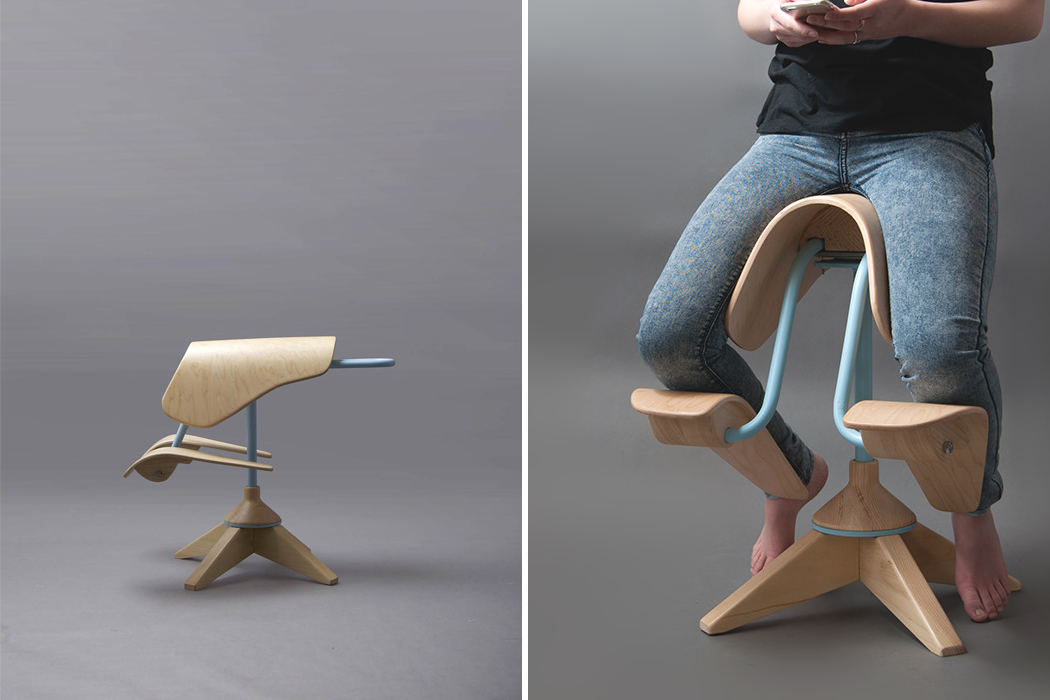
Stools are probably the most overlooked type of furniture there is. You will almost always find them, forgotten and barely used, in some corner of our homes. When truth be told, they’re much more functional and ergonomic than they are given credit for! They’re compact, and a great space-saving furniture option for our modern homes. They are also super portable! This collection of stools not only provide a healthy seating experience while promoting a good and stable posture, but most of them are created from sustainable materials as well. It’s time to cast aside chairs, and maybe adopt stools as your preferred seating medium. I’m Team Stools for sure!
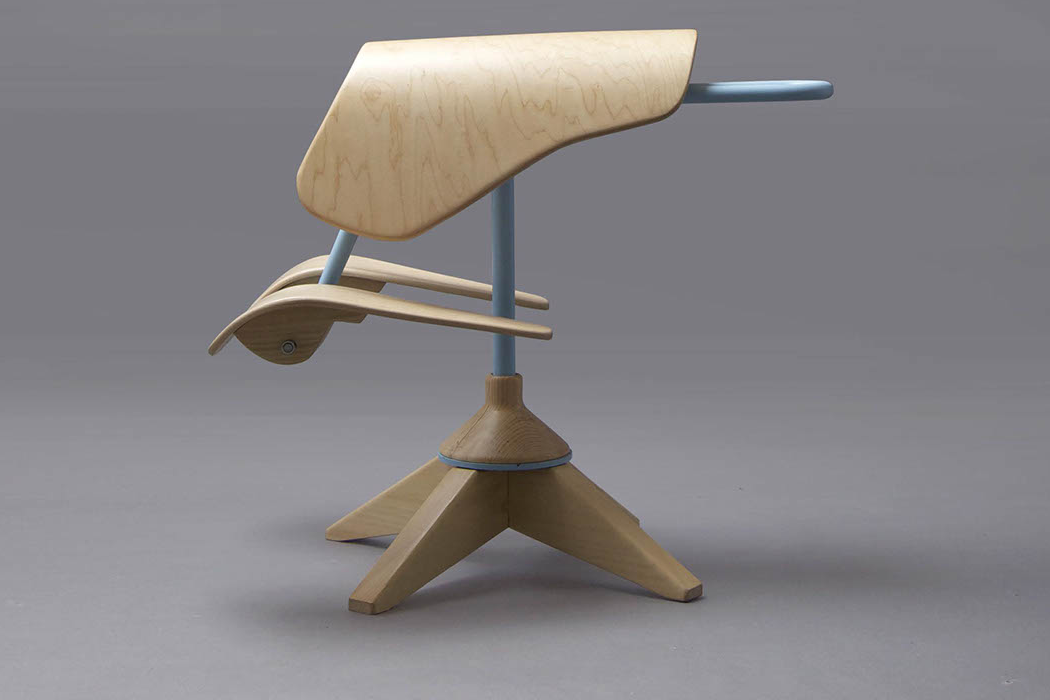
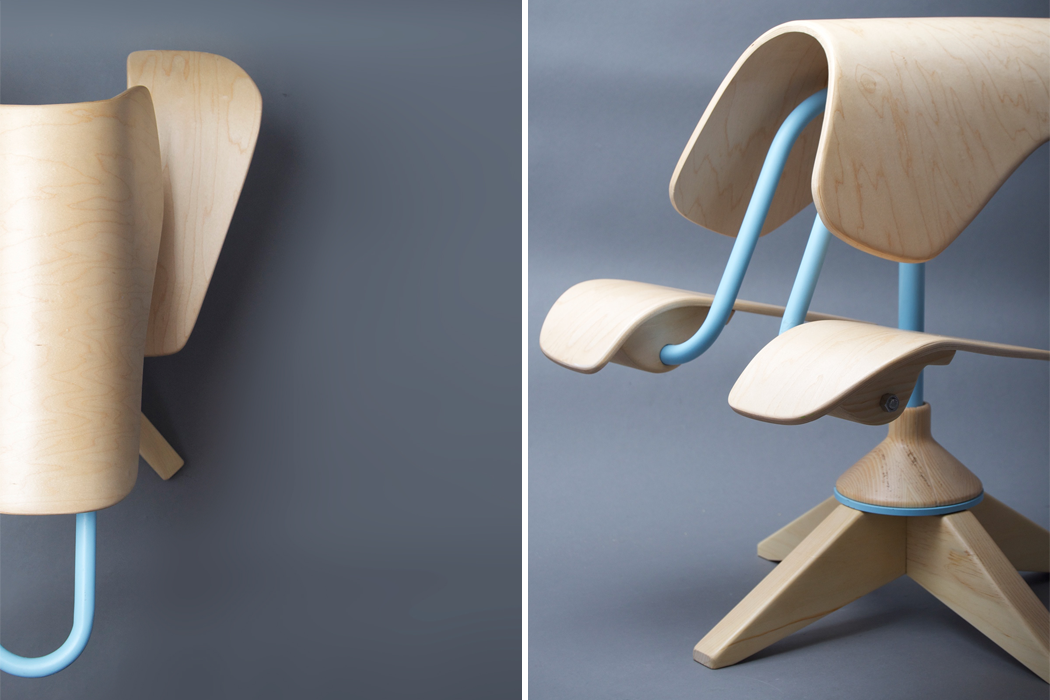
Sourcing a type of non-existence as his main inspiration, Luu designed Sado as an experiment in unconventional design and the result proves the singularity that can be achieved without blueprints guiding the way. Before designing Sado, Luu wondered, “What if the chair as we knew it never existed?” Eliminating all preconceptions regarding chair designs and all their variations, Luu began at ground zero. Speaking to this, Luu says, “As the archetype of the chair had been left unchanged for the past 6,500 years, an exploration was made to find a unique sitting form.” Settling on both a comfortable and distinct sitting form required a complete restructuring of the traditional upright chair and backrest. Sado’s ultimate form resembles either a horizontal tree log or horseback, suited for a straddled seated position that encourages a healthy posture.
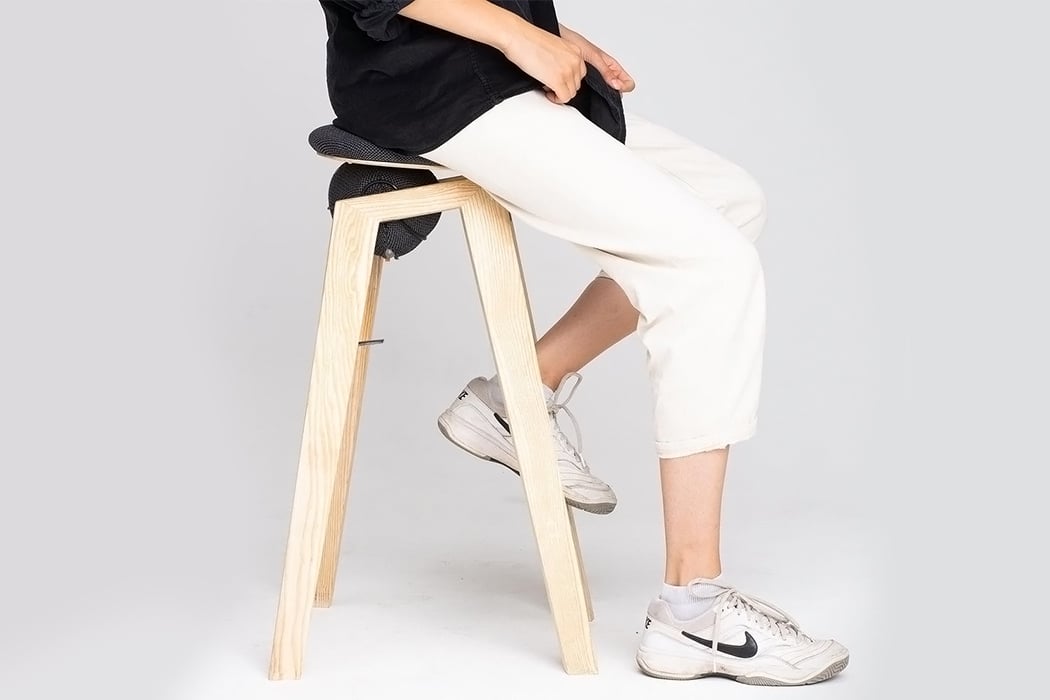
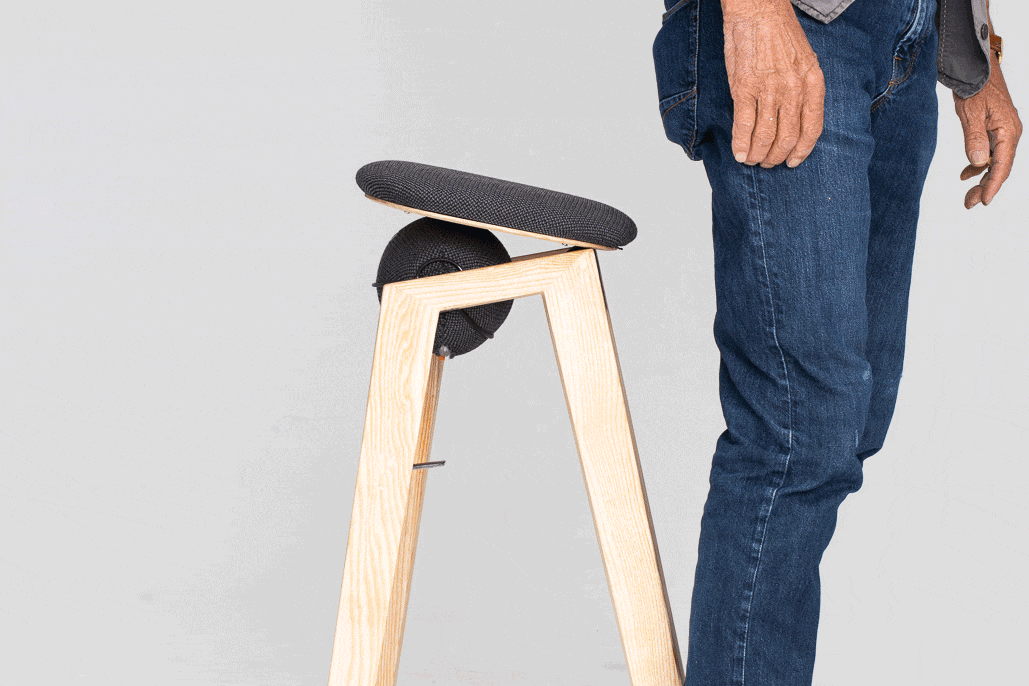
This high stool provides a healthy and playful seating experience. Sano’s seat-bed is placed on an elastic ellipsoid which allows for the movement that makes it unique and also provides support while standing up. The ellipsoid is refillable and can be adjusted via air pressure. The added “bounce” gives a cushioned support when you sit or stand up which is makes it a friendly design for the elderly or those with minor joint issues. Its height creates a more open angle within the knees and the hips compared to conventional seating furniture which further makes the stool a healthier choice. The designer trio wanted to make furniture that would engage and create a more active sitting process that could be enjoyed by people of all ages and heights. The minimal design and evergreen CMF make it suitable for any interior setting.
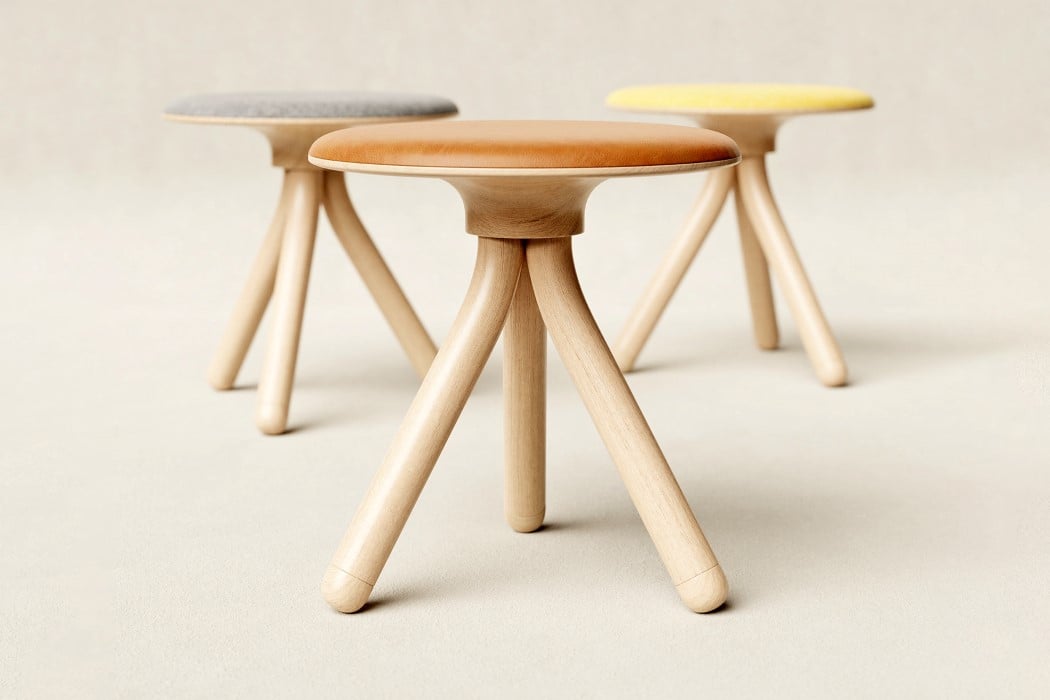
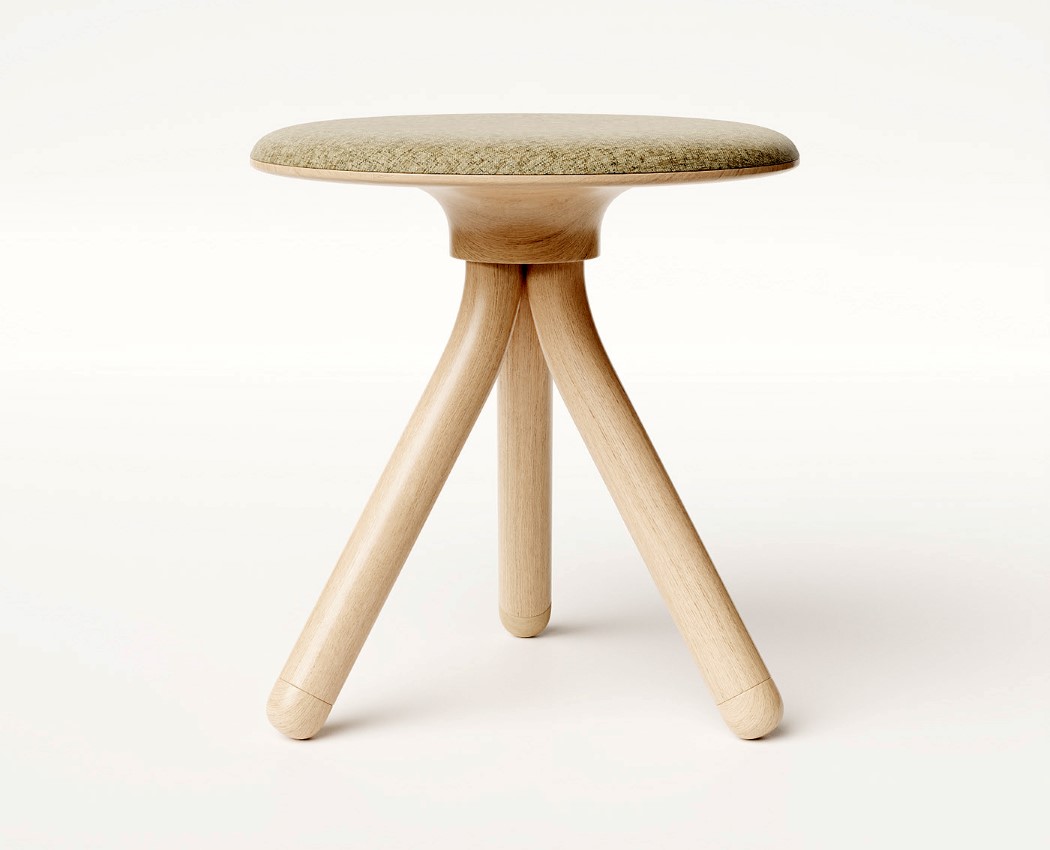
Nail four legs together put a seat on top, you have yourself a stool. That’s what the most simplistic and basic form of a stool is – four wooden legs capped with a circular or square seat. Award-winning designer João Teixeira, however, is challenging the notion of what that basic archetype of a wooden stool should look like. His design, the Knot Stool, makes use of wood in an unusual way, lending it an appearance that resembles the styles of metal and plastic furniture. The Knot uses a lathe-spun seat beneath which sit three steam-bent wooden legs, giving the stool a fun, funky facelift.
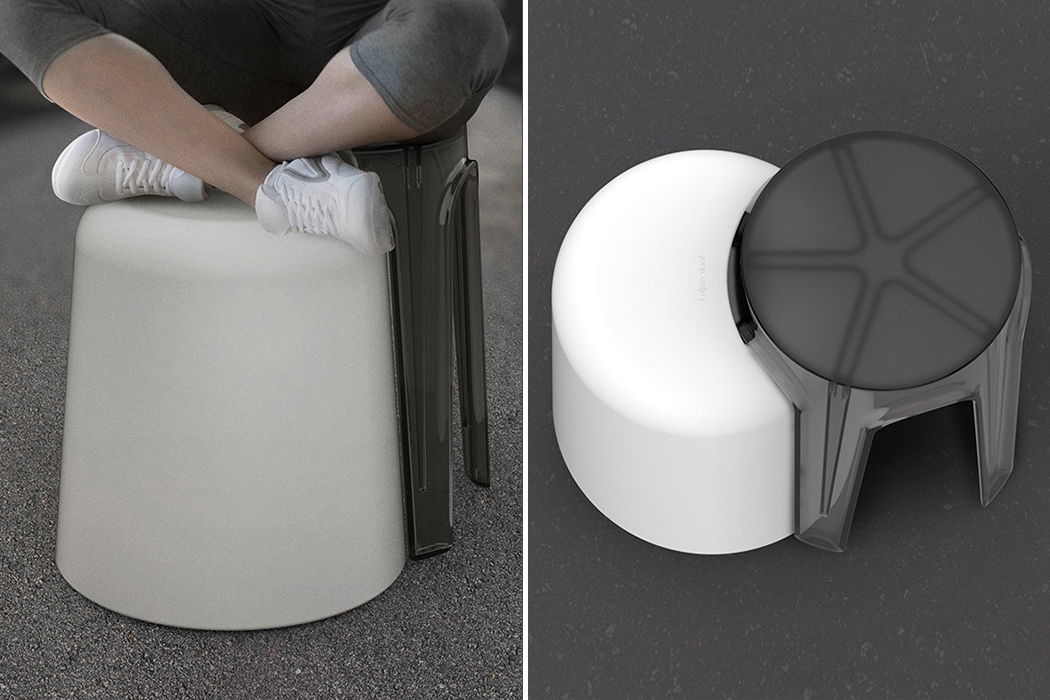
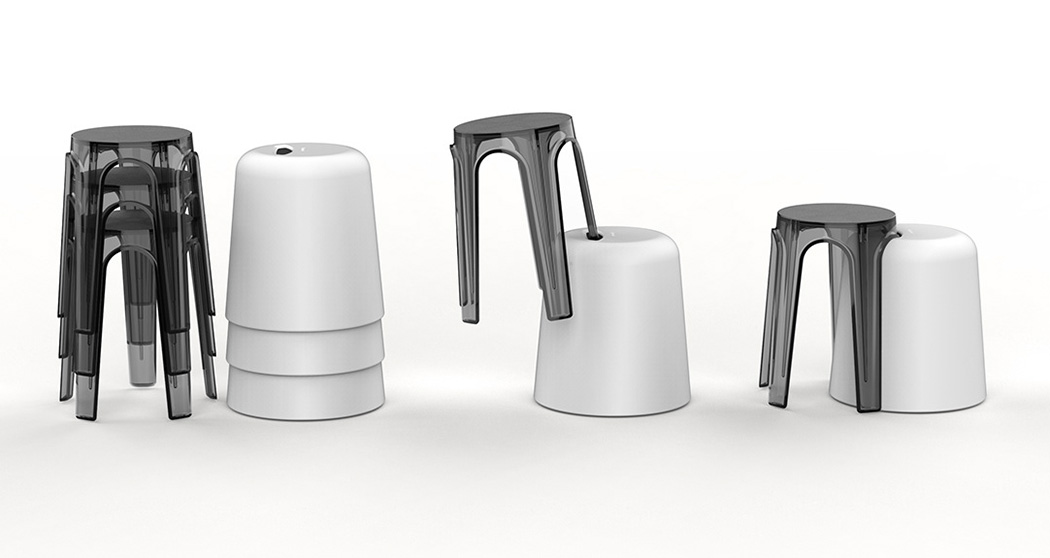
Designer Estab Han created a fusion of two very distinct settings human beings are used to in the context of eating while seated. He has created a product that brings together different aspects of seating merged into each other creating a new human experience built upon old methods – bringing cross-legged sitting to a modern stool design and is influenced by the environment of the Eulji-ro region of Seoul, Korea. Han has brought together these two styles of seating, the old and the new, and created a novel hybrid stool that caters to both of them. The product, called the ‘Eulji-ro Stool’ has two parts, one a standard four-legged stool and the other, also a stool but with a circular profile and a little cutaway section on the top. You can use the ‘Eulji-ro Stool’ in two ways – you can use both the parts separately if there are more people. And when you want to sit cross-legged, you can combine the two by inserting the leg from one into the cut section of the other.

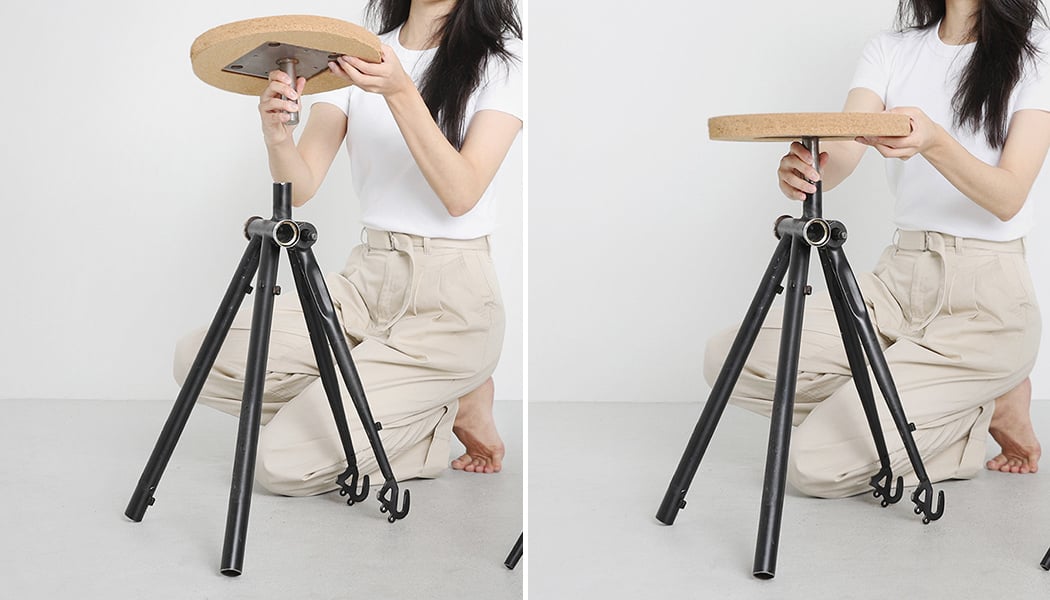
Instead of creating more waste, the 2 Stools from 1 Bicycle project makes use of what’s already there. It creates a product that everyone can use and would be less inclined to throw away. A stool is like a clothes hanger, it is something that you don’t necessarily think about, but it is a product that adds convenience to your daily life. Also, thanks to the stools’ unique aesthetics, you won’t want to give them away. Usually, stools have a symmetrical structure, but these are different. Their slanted legs create an unusual shape and remind me of the original bike frames they were taken from. One stool has three legs; the other has four. Similar to my poorly plucked eyebrows, these stools are sisters, not twins. The seat itself is made from recyclable cork, so even though it doesn’t come from the original bike, it is still in line with the project’s sustainability mission.
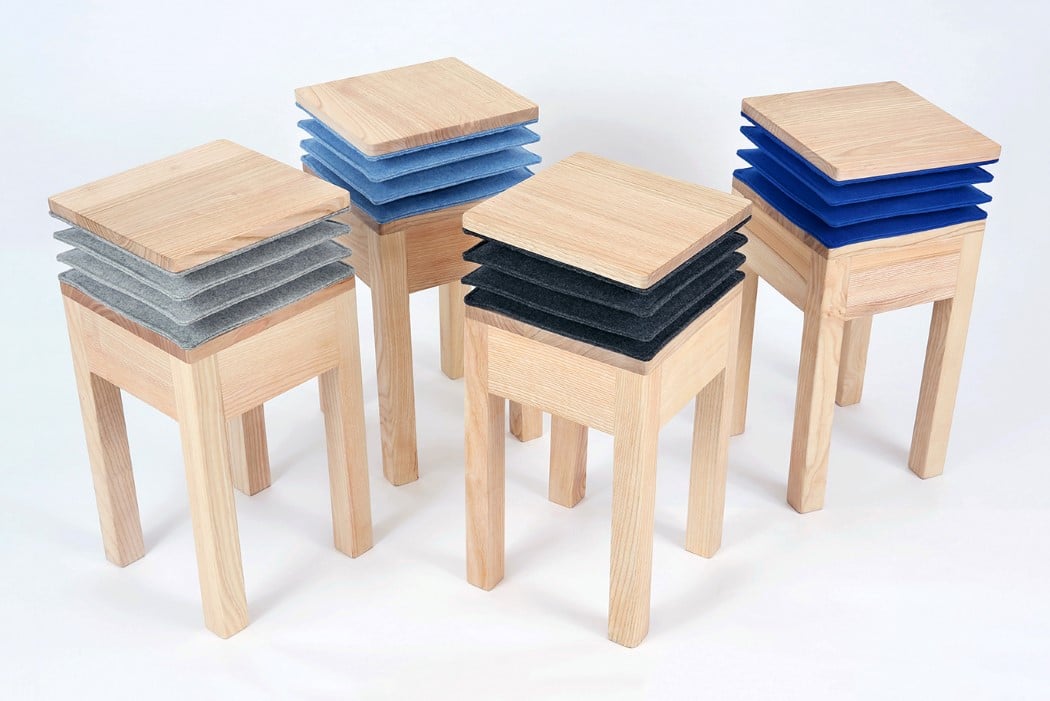
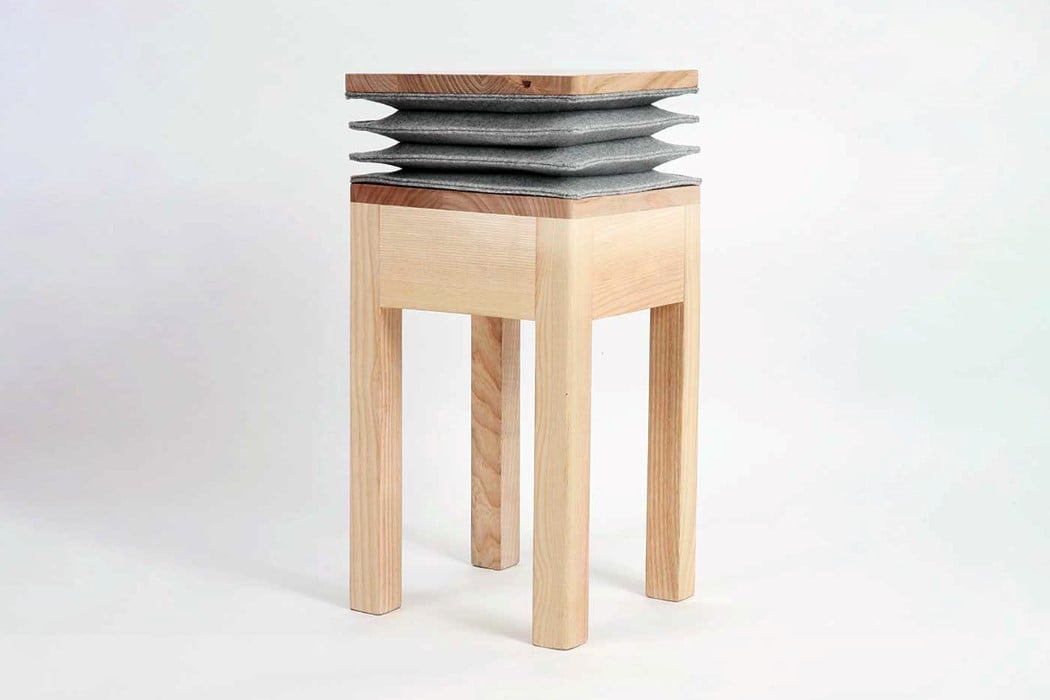
Designed by Soraia Gomes Teixeira, a Portuguese designer from Oporto, the Xia Stool aims at revitalizing the common seating object through the power of sound. The accordion-shaped cushion provides an ample visual warning to the user, priming them to expect a sound as they sit, so they’re never caught unawares. Even though the accordion-shaped cushion acts as a visual indication, it’s still incredibly fun and entertaining to actually have the seat meet your expectations, letting out a friendly honk as you sit down! Soraia mentions, “[The] Xia Stool is a fun object that makes people smile and unleashes their imagination.”
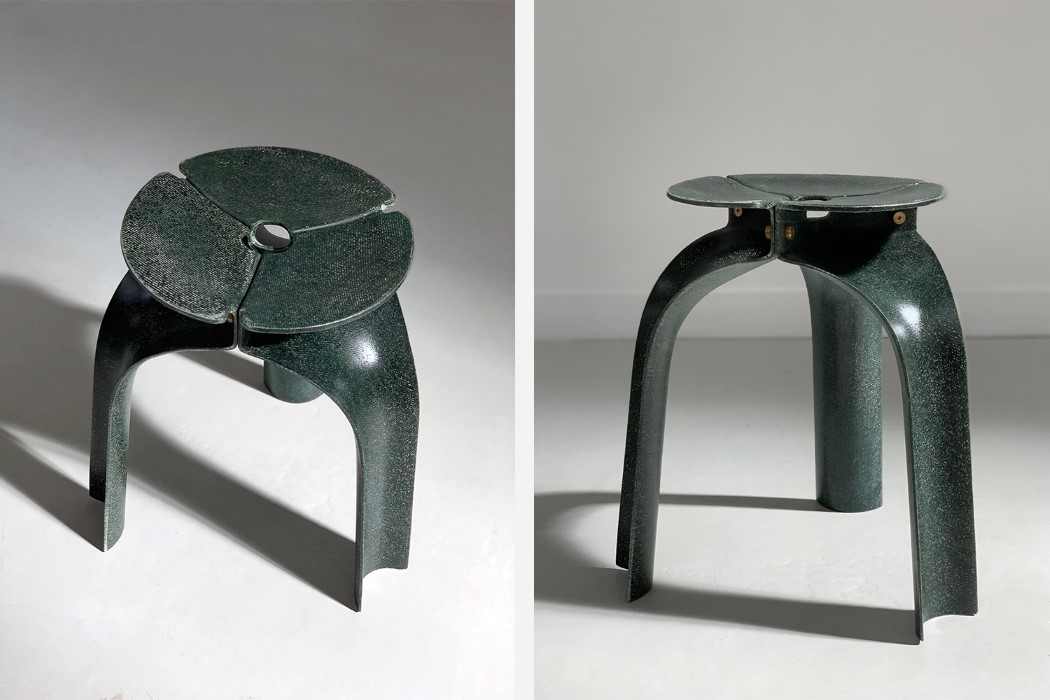
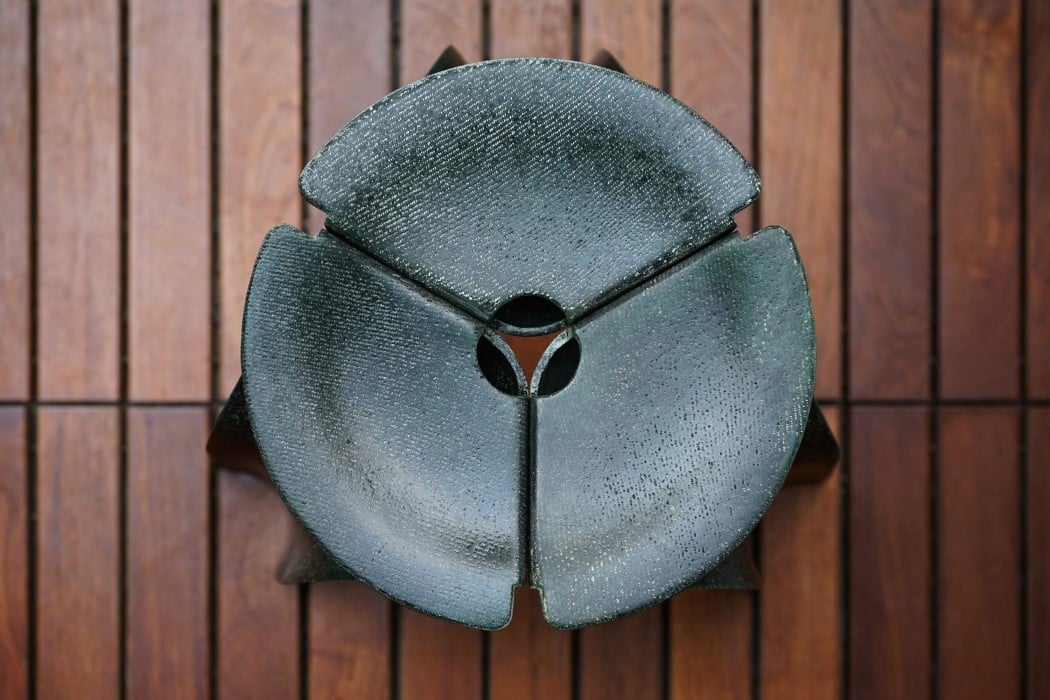
The Triplex stool addresses the overconsumption of furniture, especially the kind associated with a nomadic lifestyle that requires people to constantly buy new furniture for their new spaces. Designed to live with you, move with you, and last as long as you need, the Triplex stool comes with a three-part design that uses identical pieces that are screwed together. The identical pieces make the Triplex’s manufacturing footprint relatively small, while their stackable design means the stool can be shipped in a smaller box and can be assembled at home. While moving (or when not in use), the stool can easily be disassembled and stacked/stored efficiently.
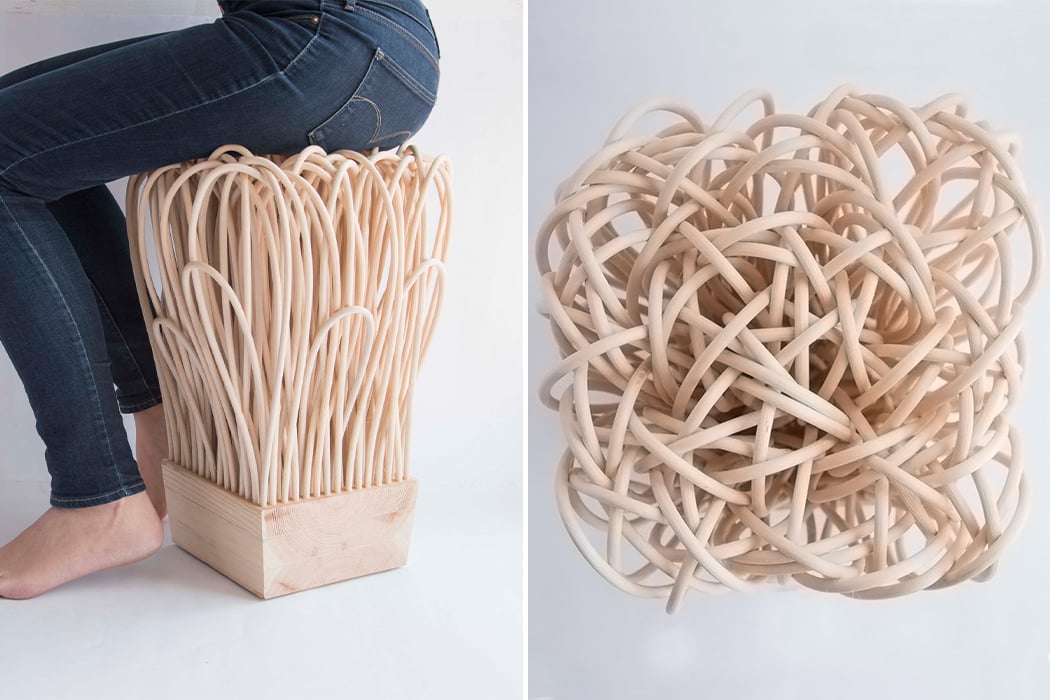
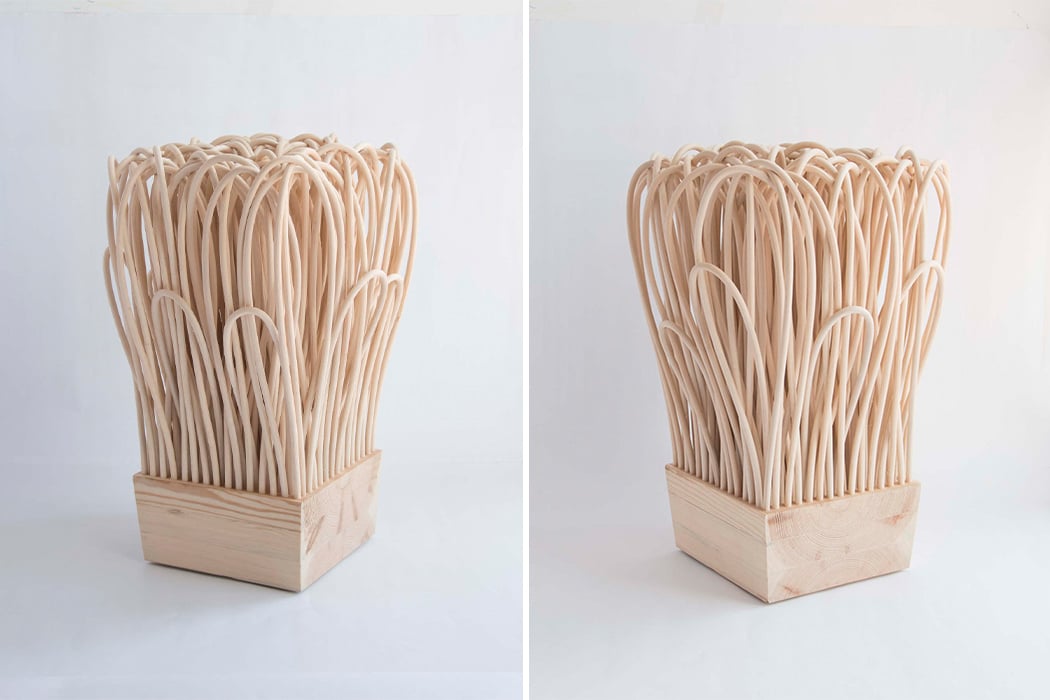
Rattan is an eco-friendly natural material that is usually used in the creation of baskets or furniture, especially chairs. It is sustainable and resilient which makes it an exceptional wood that renews in just 5-7 years. Designers love rattan for creating furniture because the manufacturing is low-tech and the production process usually involves crafting by hand or using facilities that do not negatively impact the environment. This stool explores the malleability of rattan as a material in furniture design, we are so used to seeing it in a checkered woven form that the noodle-like seating of this piece becomes a testament to how we can use often overlooked materials unconventionally to push boundaries. As the world moves towards a sustainable future, so must design.
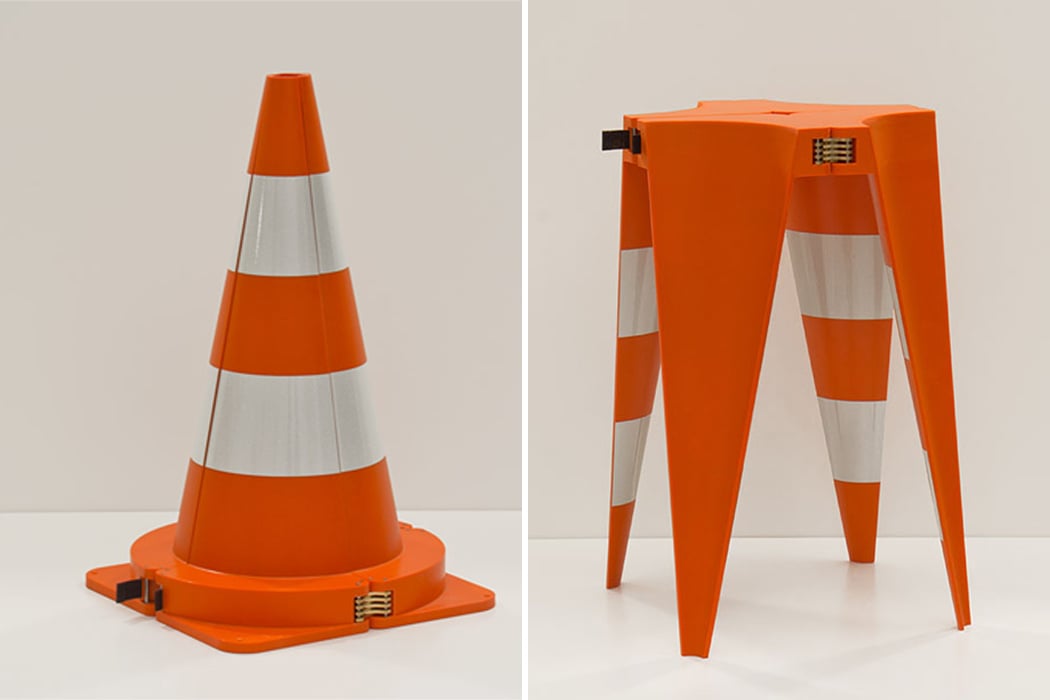
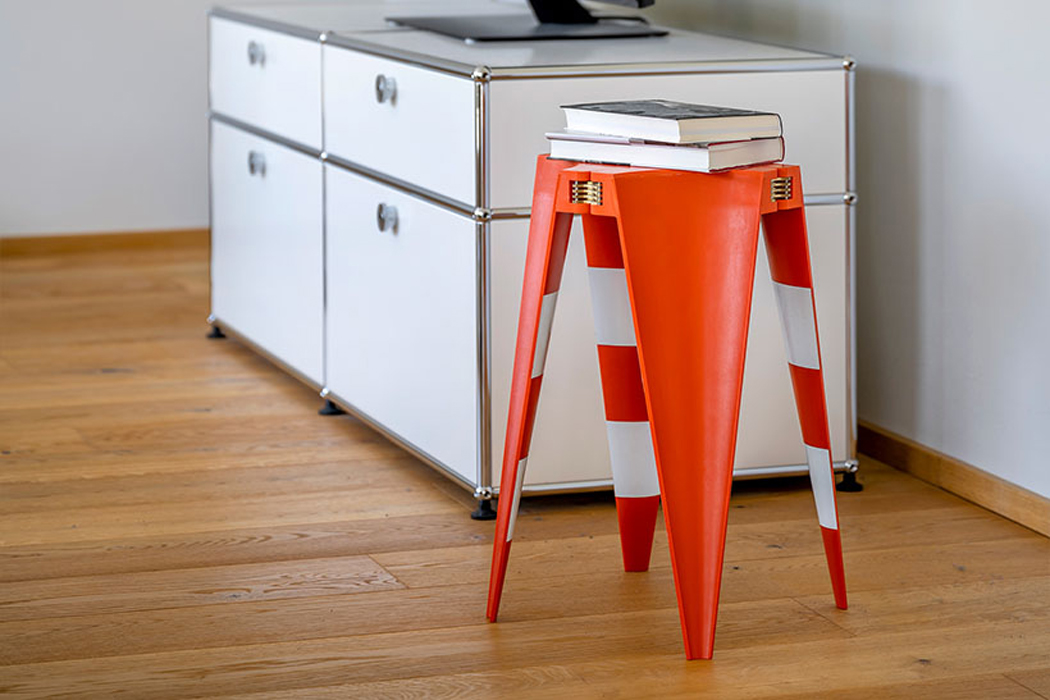
Riemann developed Pylon, a convertible stool that doubles as a piece of interior artwork and also saves space in the living room. At first glance, the Pylon appears as an ordinary traffic cone. Brass hinges line the circumference of the cone’s round base and hint at the traffic cone’s secondary form. By unlocking one of the brass clasps along the base’s outer edge, the traffic cone unfolds and inversely furls back together to form a stool, complete with four-pointed legs. Described as a “cross-section between art and design,” Riemann’s traffic cone stool has a certain industrial appeal – the ideal interior furniture piece for a warehouse turned art studio. Pylon was constructed from laminated fiberglass, fiberglass-reinforced polyamide, as well as a collection of molds that harden Pylon into its full shape.
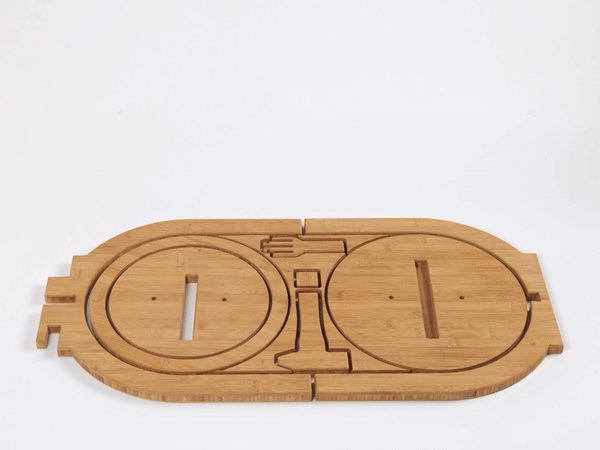
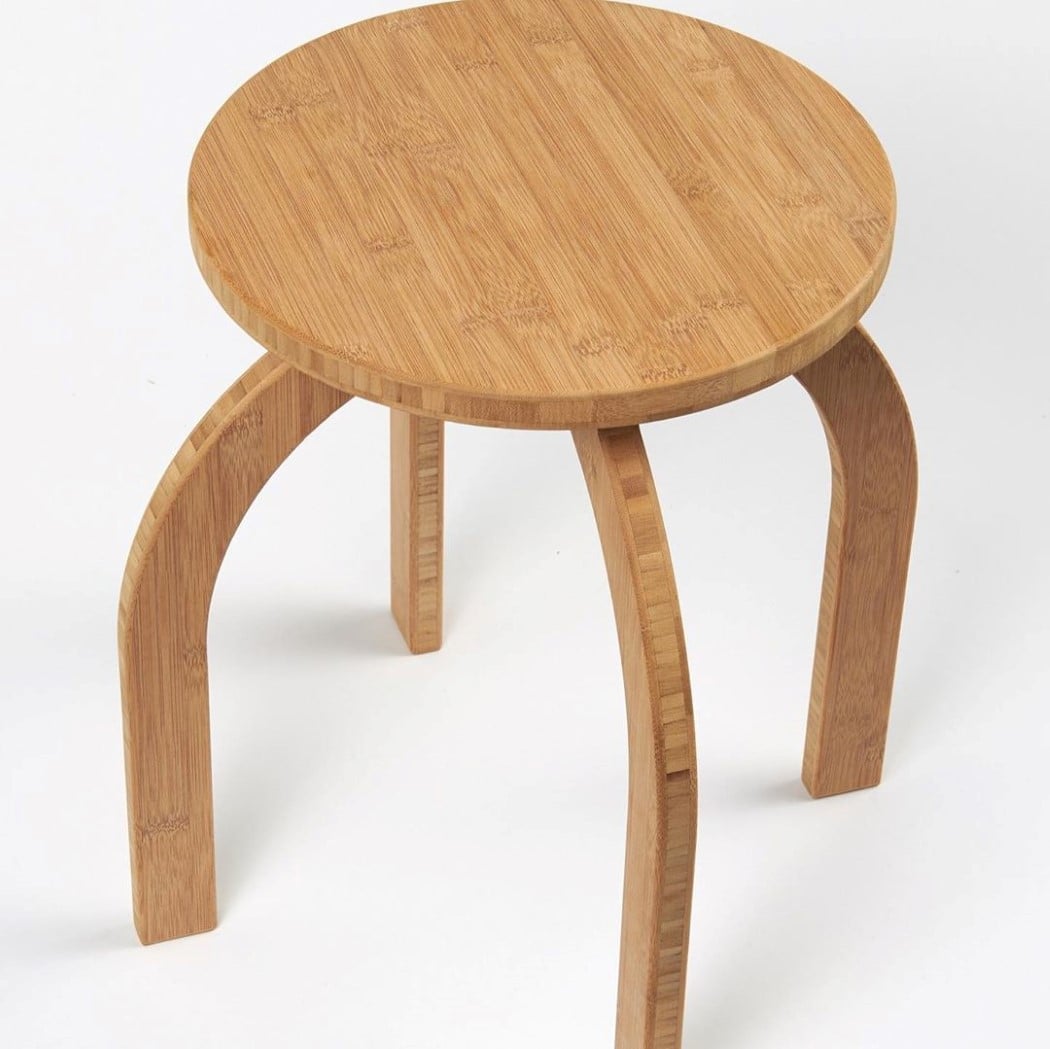
It’s worth noticing how the OO Stool does such a great job of combining sustainability along with technology and a pinch of heritage. Made from a single board of bamboo plywood, the stool is CNC machine-cut in a way that integrates every single aspect of the stool into its design. Everything you need to build the OO Stool sits within that flat-packed jigsaw puzzle of bamboo pieces, minimizing waste by using as much negative space as possible. The legs form the outside, while the dual-layered seat of the stool sits on the inside, with the negative space being filled by tiny rectangular pieces that help lock the stool in place, and even a bamboo hammer to help assemble the stool! The OO Stool uses absolutely no glue, screws, or nails… just really smart designing and Japanese joinery techniques.
via https://ift.tt/2nqSsIm
Post a Comment
Note: Only a member of this blog may post a comment.